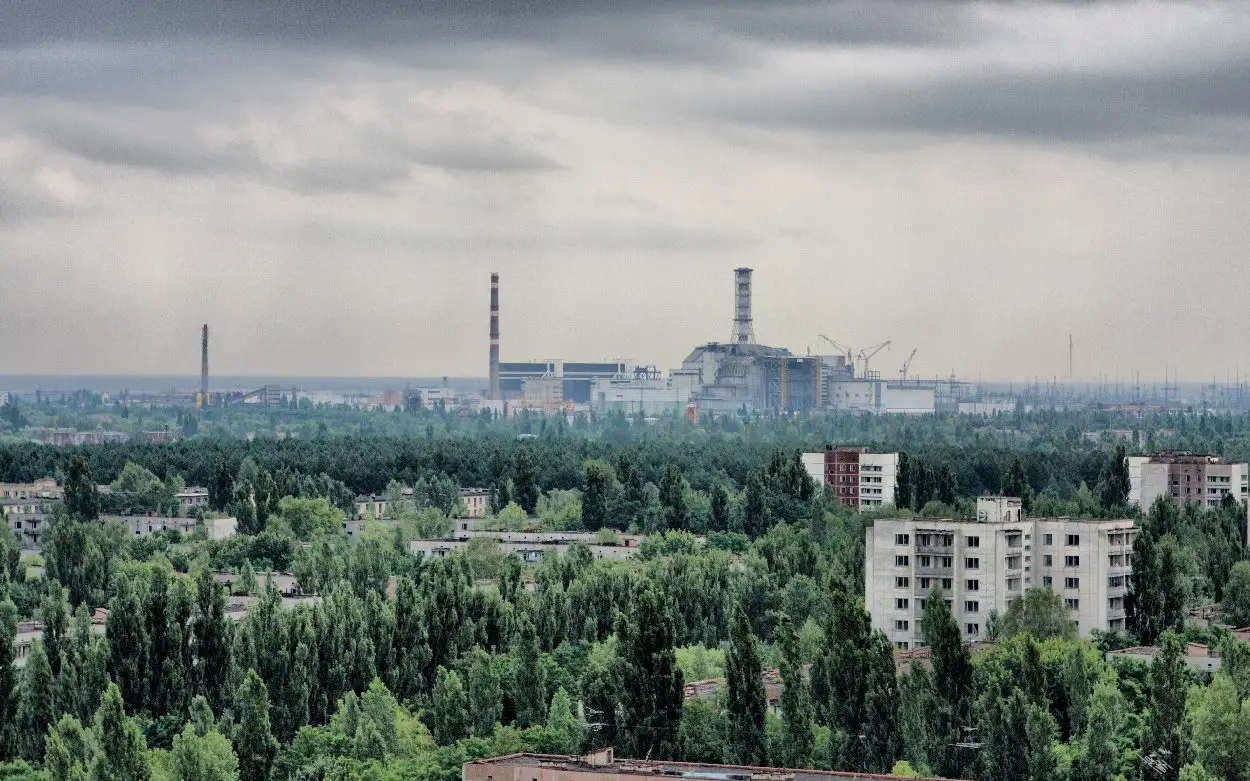A new study of dogs living in the Chernobyl Exclusion Zone has revealed new insights into living in contaminated environments.
The Chernobyl Exclusion Zone, also known as the Chernobyl Nuclear Power Plant Zone of Alienation, is an officially designated exclusion area established by the former Soviet Union over a radius of 30km around the site of the Chernobyl nuclear reactor disaster.
In 1986, No.4 reactor in the Chernobyl Nuclear Power Plant was undergoing a safety test meant to measure the ability of the steam turbine to power the emergency feedwater pumps.
This resulted in a rupture of the fuel channels, leading to a rapid decrease in pressure that caused the coolant to flash to steam. This decreased neutron absorption, leading to an increase in reactor activity, resulted in steam explosions and the melting of the reactor core.
Chemicals, toxic metals, pesticides, and organic compounds left behind from the long clean-up efforts, and from abandoned and decaying structures, including the nearby abandoned city of Pripyat and the Duga-1 military base, all contributed to an ecological and environmental disaster.
The study, published in the journal, journal Canine Medicine and Genetics, by researchers from North Carolina State, Columbia University Mailman School of Public Health, University of South Carolina, and the National Institutes of Health, has found that two groups of dogs living within the Chernobyl Exclusion Zone showed significant genetic differences.
The results suggest that the two distinct populations rarely interbed, providing the first steps towards understanding how chronic exposure to multiple environmental hazards may have impacted these populations.
“The overarching question here is: does an environmental disaster of this magnitude have a genetic impact on life in the region?” says Matthew Breen, Oscar J. Fletcher Distinguished Professor of Comparative Oncology Genetics at NC State, and a corresponding author. “And we have two populations of dogs living at and near the site of a major environmental disaster that may provide key information to help us answer that question.”
Earlier research by the co-authors, led by collaborators at NIH, used a much smaller set of genetic variants, but a larger number of dogs, to show that the two populations were separate and that each had complicated family structures.
In this parallel study, the team analysed the dog DNA samples with four times the number of genetic variants, which provided a closer look at the genomes. In addition to confirming that the two populations are indeed genetically distinct, the team was also able to identify 391 outlier regions in the genomes of the dogs that differed between dogs living at the two locations. According to the researchers, some of these markers are pointing to genes associated with genetic repair.
“The dog is a sentinel species,” Breen says. “By teasing out whether or not the genetic changes we detected in these dogs are the canine genome’s response to the exposures the populations have faced, we may be able to understand how the dogs survived in such a hostile environment and what that might mean for any population—animal or human—that experiences similar exposures.”
“Understanding the genetic and health impacts of these chronic exposures in the dogs will strengthen our broader understanding of how these types of environmental hazards can impact humans and how best to mitigate health risks,” added Breen.
Columbia University Mailman School of Public Health
Header Image Credit : Shutterstock





